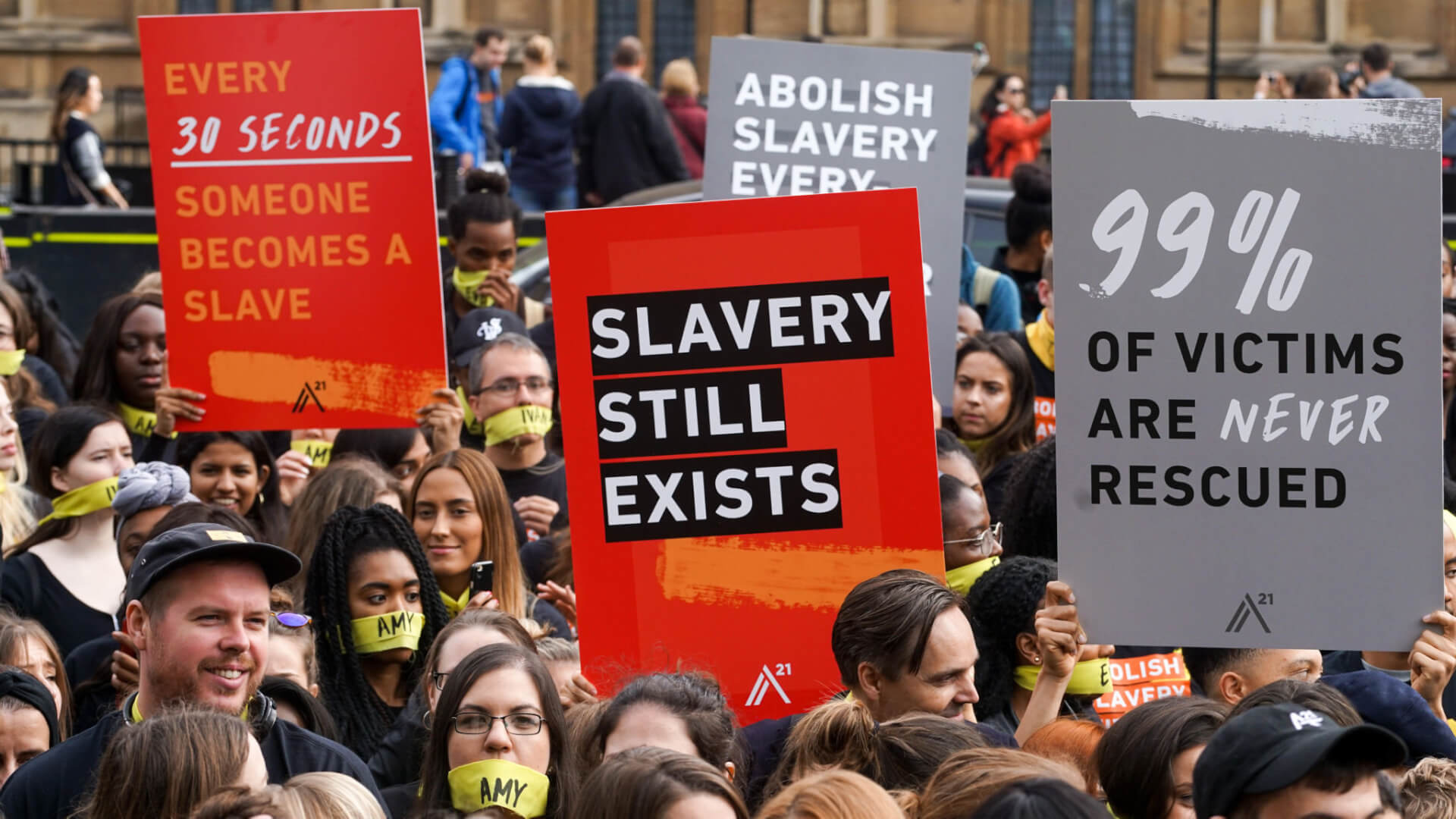In its 2021 “Global Estimates of Modern Slavery on Forced Labour and Forced Marriage” report published this week, the International Labour Organisation (ILO) revealed that around 50 million people worldwide are trapped in modern slavery, 10 million higher than 2016 estimates.
Not only is this figure 10 million higher than in 2016, but it also indicates that one in 150 people worldwide is a victim of modern slavery.
The ILO contends modern slavery comprises two components – forced labour and forced marriage – both of which indicate situations wherein a person cannot leave due to “threats, violence, deception, abuse of power, or other forms of coercion.”
Out of the 50 million in modern slavery, 27.6 million are engaged in forced labour and 22 million are trapped in forced marriages. The report asserted that while forced labour usually lasts a few years, forced marriage is in most cases a “life sentence.”
The Organization lamented that the situation has worsened since the publication of its last report six years ago, despite one of the international community’s Sustainable Development Goals being ending modern slavery across the world by 2030.
The issue has been worsened by “compounding crises” such as the COVID-19 pandemic, armed conflicts, and climate change, which it argued have had an “unprecedented” impact on employment, education, and poverty. In many cases, this has forced people to turn to unsafe migration.
2️⃣0️⃣1️⃣6️⃣ 40 million people trapped in modern slavery
— International Labour Organization (@ilo) September 12, 2022
2️⃣0️⃣2️⃣1️⃣ 50 million people trapped in modern slavery
↗️ 10 million more people cannot refuse or leave because of threats, violence, coercion, deception, or abuse of power.
👉🏾 https://t.co/sC7Es6kzNn#EndModernSlavery pic.twitter.com/QlhuS3ZCH1
The report also highlighted that the “poor and socially excluded workers in the informal economy, irregular or otherwise unprotected migrant workers,” are the most affected by the crisis.
The ILO said that the number of people entrapped in forced labour has risen by 2.7 million since 2016, which denotes an increase of 3.5 per thousand people globally. Of the 27.6 million people in forced labour, 11.8 million are women and girls and 3.3 million are children.
“The increase in the number of people in forced labour was driven entirely by forced labour in the private economy, both in forced commercial sexual exploitation and in forced labour in other sectors,” the report concluded.
It noted migrant workers are more vulnerable to forced labour than others, estimating that at least 3.9 million migrants are victims of “state-imposed forced labour.”
The ILO document highlighted that the issue of forced labour is pertinent across the globe, irrespective of a country’s wealth. “More than half of all forced labour occurs in either upper-middle income or high-income countries,” the report revealed.
Modern slavery exists around the world & disproportionately affects women & children.
— António Guterres (@antonioguterres) September 13, 2022
Let's join forces to end this degrading and inhumane practice once and for all.https://t.co/oPmA6n1FJL pic.twitter.com/7pGmDxxdMR
Asia and the Pacific account for “more than half of the global count,” with 15.1 million people in these two regions trapped in forced labour. When analysing the data on a per capita basis, the statistics are most dire in Arab states, where 5.3 per 1,000 people are victims of forced labour.
The number of people in forced marriages has also increased by 6.6 million to 22 million since 2016, with Asia and the Pacific accounting for 14.2 million of these cases. However, once again, when the data is interpreted on a per capita basis, Arab states fare the worst, with 4.8 per 1,000 people being entrapped in forced marriages. Asia and the Pacific closely follow the Arab states, with 3.3 per 1,000 people.
The report said that most victims of forced marriage are women, accounting for over two-thirds of the 22 million total. 60% of the victims live in lower-middle income countries.
Forced marriage victims are at a “greater risk of sexual exploitation, violence, and domestic servitude and other forms of forced labour both inside and outside the home,” the ILO noted.
The findings of the joint @UNMigration report are deeply concerning. The scourge of modern slavery is getting worse.
— Senator Penny Wong (@SenatorWong) September 13, 2022
Australia is strengthening the Modern Slavery Act to eliminate forced labour from our supply chains and introducing tough penalties for non-compliance. https://t.co/SZnNk62BEX
Taking all of this into consideration, the organization said the global community must gather “the will and resources to overcome these obstacles and get progress towards ending modern slavery back on track.”
The ILO suggests that countries must prioritise workers’ freedoms to associate and collectively bargain so that they can form trade unions and other workers’ cooperation groups. It argues that workers must also be provided ‘basic income security’ so that they are able to refuse abusive jobs. This must be complemented with the strengthening of public labour inspectorates to identify and counter any labour law violations.
Meanwhile, on forced marriages, the ILO recommended adopting “gender-sensitive laws, policies, programmes, and budgets, including gender-responsive social protection mechanisms.” In particular, the report recommended that the national laws provide civil and criminal protections, such as increasing the legal age of marriage and criminalising marriage without consent.

